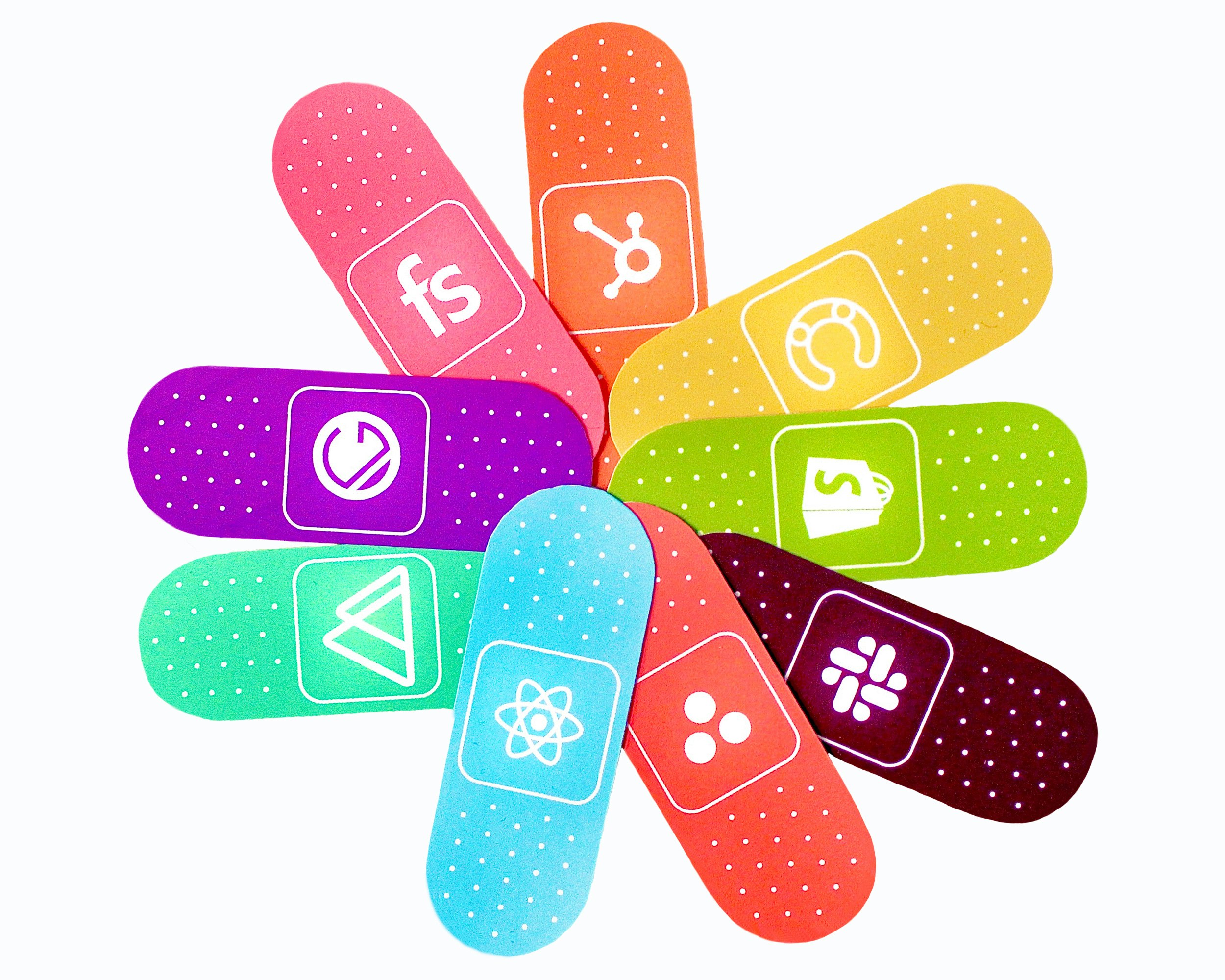In the rapidly evolving landscape of business technology, Software as a Service (SaaS) stacks have emerged as a cornerstone for organizations seeking efficiency and scalability. These stacks consist of a suite of applications that work together to streamline operations, enhance productivity, and drive growth. However, while the promise of SaaS stacks is enticing, many businesses find themselves grappling with the complexities that come with managing multiple applications.
The integration of various tools can lead to inefficiencies, increased costs, and ultimately, a drain on resources. This is where SMS-iT shines as the world’s first No-Stack Agentic AI Platform, offering a unified solution that replaces outdated stacks and fragmented applications with a single intelligent ecosystem. SMS-iT not only simplifies the management of business processes but also empowers entrepreneurs to automate outcomes effortlessly.
By leveraging Agentic AI, SMS-iT provides a seamless experience that allows businesses to acquire customers, close deals, and retain clients without the hassle of juggling multiple tools. As we delve deeper into the intricacies of SaaS stacks, it becomes crucial to identify hidden drains that can undermine their effectiveness. Understanding these hidden drains is essential for optimizing your SaaS stack and ensuring that your business operates at peak efficiency.
Key Takeaways
- SaaS Stacks are essential for modern businesses, but they can have hidden drains that impact efficiency and security.
- Identifying hidden drains is crucial for optimizing SaaS Stacks and maximizing their value.
- Unused or underutilized features can drain resources and hinder the effectiveness of a SaaS Stack.
- Inefficient integration and data flow can create hidden drains that impact the performance of a SaaS Stack.
- Overlooked security risks can pose significant hidden drains on a SaaS Stack and compromise sensitive data.
The Importance of Identifying Hidden Drains
Hidden drains within a SaaS stack can significantly impact an organization’s performance and profitability. These drains often go unnoticed, lurking beneath the surface while consuming valuable resources and hindering growth. Identifying these inefficiencies is not just a matter of improving operational performance; it’s about safeguarding your bottom line.
When businesses fail to recognize these hidden drains, they risk wasting time and money on tools that do not deliver the expected return on investment. Moreover, in today’s competitive landscape, agility is key. Companies that can swiftly adapt to changing market conditions and customer needs are more likely to thrive.
By pinpointing hidden drains within your SaaS stack, you can streamline processes, reduce costs, and enhance overall productivity. SMS-iT’s unified platform is designed to help businesses eliminate these inefficiencies by providing a comprehensive view of operations and automating tasks that would otherwise require manual intervention. This not only saves time but also empowers entrepreneurs to focus on strategic initiatives that drive growth.
Hidden Drain #1: Unused or Underutilized Features
One of the most common hidden drains in SaaS stacks is the presence of unused or underutilized features within applications. Many software solutions come packed with a plethora of functionalities designed to enhance user experience and improve productivity. However, businesses often find themselves using only a fraction of these features, leading to wasted resources and missed opportunities.
This phenomenon can occur for several reasons: lack of training, insufficient onboarding processes, or simply the overwhelming nature of complex software. When organizations invest in software but fail to leverage its full potential, they are essentially throwing money down the drain. This not only affects the budget but also limits the ability to achieve desired outcomes.
SMS-iT addresses this issue by providing an intuitive interface that simplifies user experience and encourages full utilization of its features. By ensuring that every aspect of the platform is accessible and easy to understand, SMS-iT empowers businesses to maximize their investment and drive better results.
Hidden Drain #2: Inefficient Integration and Data Flow
Another significant hidden drain in SaaS stacks arises from inefficient integration and data flow between applications. Many businesses rely on multiple tools to manage different aspects of their operations, leading to fragmented data silos that hinder collaboration and decision-making. When data cannot flow seamlessly between systems, it creates bottlenecks that slow down processes and increase the likelihood of errors.
Inefficient integration can also lead to duplicated efforts, as employees may find themselves manually transferring data from one application to another. This not only wastes time but also increases the risk of inaccuracies in reporting and analysis. SMS-iT eliminates these challenges by offering a unified platform that integrates CRM, ERP, and over 60 microservices into one cohesive ecosystem.
With SMS-iT, businesses can enjoy streamlined data flow and efficient integration, allowing them to make informed decisions based on real-time insights.
Hidden Drain #3: Overlooked Security Risks
In an era where data breaches and cyber threats are rampant, overlooked security risks represent a critical hidden drain in SaaS stacks. Many organizations underestimate the importance of robust security measures when implementing multiple software solutions. As a result, they may expose sensitive information to potential threats without even realizing it.
This oversight can lead to devastating consequences, including financial loss, reputational damage, and legal ramifications. SMS-iT prioritizes security by incorporating advanced measures into its platform, ensuring that businesses can operate with peace of mind. By centralizing operations within a single ecosystem, SMS-iT reduces the attack surface for potential threats while providing comprehensive security features that protect sensitive data.
Organizations can focus on growth without the constant worry of security vulnerabilities undermining their efforts.
The Impact of Hidden Drains on Your SaaS Stack
The cumulative effect of hidden drains on your SaaS stack can be profound. When organizations fail to address these inefficiencies, they may experience decreased productivity, increased operational costs, and ultimately, stagnation in growth. Hidden drains can create a ripple effect throughout the organization, impacting employee morale and customer satisfaction as well.
Moreover, as businesses scale, these hidden drains become even more pronounced. What may have been manageable at a smaller scale can quickly spiral out of control as operations expand. By proactively identifying and addressing hidden drains within your SaaS stack, you position your organization for sustainable growth and success.
SMS-iT’s intelligent platform enables businesses to tackle these challenges head-on by providing actionable insights and automation capabilities that drive efficiency.
How to Identify Hidden Drains in Your SaaS Stack
Identifying hidden drains within your SaaS stack requires a systematic approach that involves analyzing various aspects of your operations. Start by conducting a thorough audit of your current software solutions and their usage patterns. Look for features that are rarely utilized or applications that are underperforming compared to expectations.
Engaging with employees who use these tools daily can provide valuable insights into pain points and areas for improvement. Additionally, monitoring data flow between applications is crucial for identifying integration issues. Utilize analytics tools to track how data moves across your systems and pinpoint any bottlenecks or redundancies.
Regularly reviewing security protocols is also essential for uncovering overlooked risks that could jeopardize your organization’s data integrity. SMS-iT simplifies this process by offering comprehensive analytics and reporting features that allow businesses to gain visibility into their operations and identify hidden drains effectively.
Strategies for Fixing Hidden Drains in Your SaaS Stack
Once you’ve identified hidden drains within your SaaS stack, it’s time to implement strategies for fixing them. Start by providing training and resources to ensure that employees are fully equipped to utilize all features of your software solutions effectively. This may involve hosting workshops or creating user guides that highlight best practices for maximizing tool usage.
For integration issues, consider consolidating applications into a unified platform like SMS-iT that eliminates the need for multiple tools while ensuring seamless data flow. By centralizing operations within one ecosystem, you can reduce complexity and enhance collaboration across teams. Additionally, regularly reviewing security measures and updating protocols will help mitigate risks associated with overlooked vulnerabilities.
The Role of Regular Maintenance and Monitoring
Regular maintenance and monitoring play a vital role in preventing hidden drains from re-emerging in your SaaS stack. Establishing a routine for reviewing software usage, data flow, and security protocols will help you stay ahead of potential issues before they escalate into significant problems. This proactive approach not only ensures optimal performance but also fosters a culture of continuous improvement within your organization.
SMS-iT supports this ongoing maintenance by providing real-time analytics and monitoring capabilities that keep you informed about your operations’ health. With SMS-iT’s intelligent platform at your disposal, you can easily track performance metrics and make data-driven decisions that enhance efficiency over time.
Case Studies: Successful Fixes for Hidden Drains
Numerous organizations have successfully addressed hidden drains within their SaaS stacks by leveraging SMS-iT’s capabilities. For instance, a mid-sized marketing agency struggled with underutilized features across multiple software solutions, leading to wasted resources and inefficiencies in project management. By transitioning to SMS-iT’s unified platform, they were able to streamline their operations and fully leverage the features available to them—resulting in increased productivity and improved client satisfaction.
Another case involved a growing e-commerce business facing challenges with inefficient integration between their CRM and inventory management systems. The lack of seamless data flow led to order fulfillment delays and customer dissatisfaction. By adopting SMS-iT’s integrated ecosystem, they eliminated these bottlenecks and achieved real-time visibility into their operations—ultimately enhancing their ability to serve customers effectively.
Taking Action to Optimize Your SaaS Stack
In conclusion, optimizing your SaaS stack is essential for driving efficiency and growth within your organization. By identifying hidden drains such as unused features, inefficient integration, and overlooked security risks, you can take proactive steps toward enhancing performance and reducing costs. SMS-iT stands out as the smarter, faster, and simpler way to automate outcomes across your business processes.
Don’t let hidden drains undermine your success—take action today by exploring SMS-iT’s capabilities through our 7-day free trial at https://www.smsit.ai. Experience firsthand how our No-Stack Agentic AI Platform can transform your operations and empower you to achieve results once thought possible only for enterprises. Embrace the future of business automation with SMS-iT and unlock your organization’s full potential!
FAQs
What are the hidden drains in a SaaS stack?
Hidden drains in a SaaS stack refer to inefficiencies or bottlenecks in the software-as-a-service technology stack that can lead to decreased productivity, increased costs, or other negative impacts on the business.
Why should I fix hidden drains in my SaaS stack?
Fixing hidden drains in your SaaS stack is important because it can lead to improved efficiency, cost savings, and better overall performance of your software systems. By addressing these hidden drains, you can optimize your SaaS stack and ensure that your technology is working at its best.
What are some examples of hidden drains in a SaaS stack?
Examples of hidden drains in a SaaS stack include inefficient integrations between different software systems, redundant or unused features within SaaS applications, and lack of automation in key processes. These hidden drains can lead to wasted time, increased costs, and decreased overall effectiveness of the SaaS stack.
How can I identify hidden drains in my SaaS stack?
You can identify hidden drains in your SaaS stack by conducting a thorough review of your software systems, analyzing key performance metrics, and seeking feedback from users and stakeholders. Additionally, working with a technology consultant or SaaS provider can help uncover hidden drains and provide recommendations for improvement.
What are some strategies for fixing hidden drains in a SaaS stack?
Strategies for fixing hidden drains in a SaaS stack include streamlining integrations between software systems, conducting regular audits of SaaS applications to identify and remove redundant features, and implementing automation tools to improve efficiency. It’s also important to stay updated on the latest best practices and technologies in the SaaS industry.









